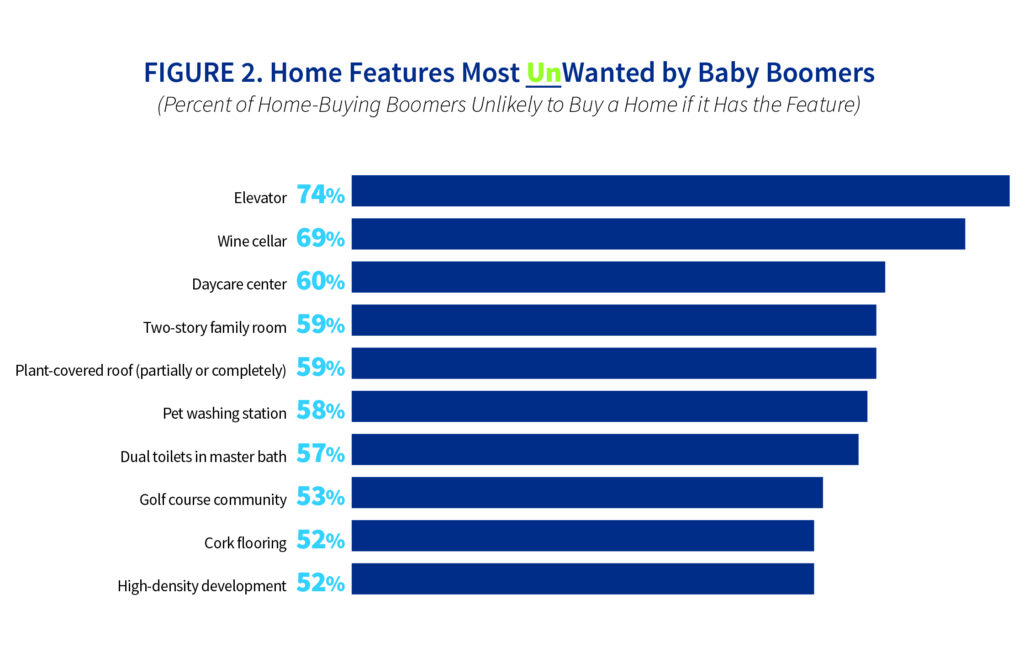Much like the average home buyer, buyers in the baby boomer generation like laundry rooms and energy efficiency, and dislike elevators and wine cellars. Baby boomers, however, tend to have stronger opinions about what they do and do not want in their homes, as indicated in NAHB’s recent update on What Home Buyers Really Want.
The 2019 edition is based on a survey of 3,996 home buyers, both recent (purchased a home in the last three years) and prospective (expecting to buy a home in the next three years). Respondents rated 175 features on the following four-tier scale:
- Essential: Unlikely to buy a home without feature
- Desirable: Seriously influenced to buy home if included
- Indifferent: Would not influence purchase decision
- Do Not Want: Not likely to buy a home with feature
No. 1 is a laundry room, which 94% of baby boomers want. All three ENERGY STAR categories also made the list — topped by ENERGY STAR windows at 91%.

Baby boomers trended in line with overall home buyers with two exceptions: Baby boomers are more likely to indicate what they want (based on higher essential/desirable percentages noted in the chart), and a full bath on the main level (displacing a double kitchen sink).
An elevator is the feature baby boomers are least likely to want, as 80% of baby boomers are looking to purchase single-story homes. It’s important to remember, however, that a niche market usually exists even among the most generally unwanted items; in this case, 10% of baby boomers consider an elevator desirable, and 3% think it’s essential.

With the most undesirable features, baby boomers again paralleled the interests of the general home buyer population. The biggest difference is that a two-story family room ranks fourth on the unwanted list for baby boomers, compared to ninth for all buyers. In every case, though, the share of baby boomers who explicitly reject the feature is at least 5 percentage points higher.
Baby boomers also ranked their most desired community features:
- Near retail space (72% ranked essential or desirable)
- Walking/jogging trails (66%)
- Typically suburban (65%)
- Walkable community (62%)
- Park area (61%)
The suburban environment supports 55+ buyers’ general locality preference, as 67% prefer to live in the suburbs versus 8% who prefer the city. Housing affordability may be a driving factor in that as well, as the number of “exurbs” — locations just beyond more affluent suburbs — continue to rise.
These factors are important to consider in developing new homes as the number of 55+ households is projected to grow from 54.9 million to 66.3 million, or approximately 47.1% of U.S. households.
For inspiring 55+ development ideas, visit the recently updated Best of 55+ Housing Awards website.
This post was adapted from an article in the Winter 2019 issue of 55+ Housing Online Magazine. Dr. Paul Emrath is vice president for survey and housing policy research at NAHB; Rose Quint, who also contributed to this information, is assistant vice president for survey and housing policy research at NAHB. The survey department conducts a number of regular surveys, such as the quarterly survey for the widely cited Remodeling Market Index.

